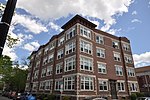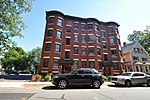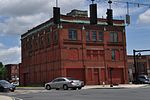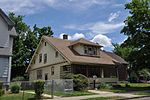Hancock Apartment Building
1912 establishments in MassachusettsApartment buildings in Springfield, MassachusettsApartment buildings on the National Register of Historic Places in MassachusettsNational Register of Historic Places in Springfield, Massachusetts
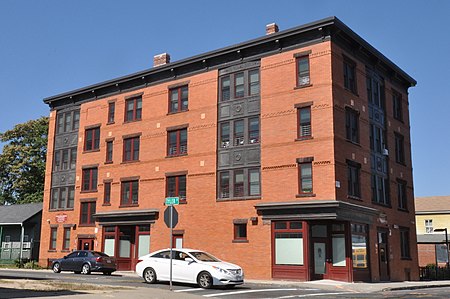
The Hancock Apartment Building. also known as the Schaffer Apartments, is a historic mixed-used retail and residential apartment building at 116-118 Hancock Street and 130 Tyler Street on the east side of Springfield, Massachusetts. Built in 1912, it is good local example of an early 20th-century Classical Revival apartment house, built as the city's outer neighborhoods grew as streetcar suburbs. The building was listed on the National Register of Historic Places in 2015.
Excerpt from the Wikipedia article Hancock Apartment Building (License: CC BY-SA 3.0, Authors, Images).Hancock Apartment Building
Tyler Street, Springfield
Geographical coordinates (GPS) Address Nearby Places Show on map
Geographical coordinates (GPS)
| Latitude | Longitude |
|---|---|
| N 42.106666666667 ° | E -72.568611111111 ° |
Address
Tyler Street 118;120
01105 Springfield
Massachusetts, United States
Open on Google Maps

